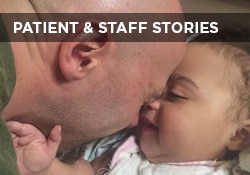This website uses cookies so that we can provide you with the best user experience possible. Cookie information is stored in your browser and performs functions such as recognising you when you return to our website and helping our team to understand which sections of the website you find most interesting and useful.

Susan E. Mazer, Ph.D. Blog
Thoughts and ideas on healthcare
Hi, and welcome to my blog! I'm Susan E. Mazer -- a knowledge expert and thought leader on how the environment of care impacts the patient experience. Topics I write about include safety, satisfaction, hospital noise, nursing, care at the bedside, and much more.
Measuring the Patient Experience of Music and Nature: A New Study
May 26, 2017
 “Not everything can be measured and not everything that can be measured, matters.”
“Not everything can be measured and not everything that can be measured, matters.”
I am not sure when I heard this. But it always comes up when people talk about the validation and comparative value of qualitative and quantitative research.
In response, more and more researchers are using mixed methodologies to seriously investigate the human condition and what actually impacts it.
The patient experience movement has demanded research resulting in studies that cross the chasm between numbers and people. Even HCAHPS surveys, while quantitatively evaluated and reported, look at patients’ perceptions of concepts and phenomena that are far from absolute in their definitions and outcomes.
For example, measuring how often a patient was spoken to with respect enters murky waters. The options chosen in the multiple-choice questions can be added up, but the tally won’t reveal what happens in real time, what it means, or what the word “respect” means to the person answering the survey.
C.A.R.E. vs. Commercial TV
But that aside, I’m pleased to share with you results of the first qualitative study using C.A.R.E. music and nature programming.
Researchers in the Social Work Department at the Naval Medical Center in San Diego (NMCSD) recently looked at the experience of pleasantness or unpleasantness of military outpatients in a waiting room that was playing commercial television or C.A.R.E. music and nature programming. They looked at the descriptors patients used to describe the experience and the content. They also were well aware of the limitations of this study.
Using a Likert scale to measure subjective impressions of 149 patients over several months, they assessed perceived “pleasantness” of different waiting room environments. The control group was exposed to daytime television. The experimental group was exposed to C.A.R.E. music and nature programming. The results are most insightful.
- Median pleasantness score was statistically significantly higher in the experimental group (2.0) than in the control group (.5).
- Control group patients were more likely to comment on the physical characteristics of the waiting room (“small,” “standard,” “empty”).
- Experimental group patients were more likely to use emotional descriptors (“comforting,” “peaceful,” “settling and calm”) to describe the waiting room experience.
Pleasantness is Not a Preference
What was also interesting were the questions that the researchers asked. They did not ask if the patients liked what they saw or whether they preferred relaxation programming to daytime programming. Rather, they asked about the experience of waiting and the effect of television programming.
As difficult as it may seem to study an experience, the evidence of what matters can be found in the patients’ own experience, expressed in their own words. In this study, for example, pleasantness is described with the words “comforting,” “calm,” and “peaceful.”
We may not be able to exactly and numerically measure comfort, but without question, comfort matters to patients who have to endure waiting many times over the course of their diagnosis and treatment.
An article about the study was published in the April 2017 issue of Music and Medicine. For a PDF copy of the journal article, please contact us.
P.S. If you like this post, please do me a favor and share on LinkedIn, Twitter, Facebook, etc. Also to get automatic notices when a new post is published, please subscribe. No spam – just great content. Thanks!










